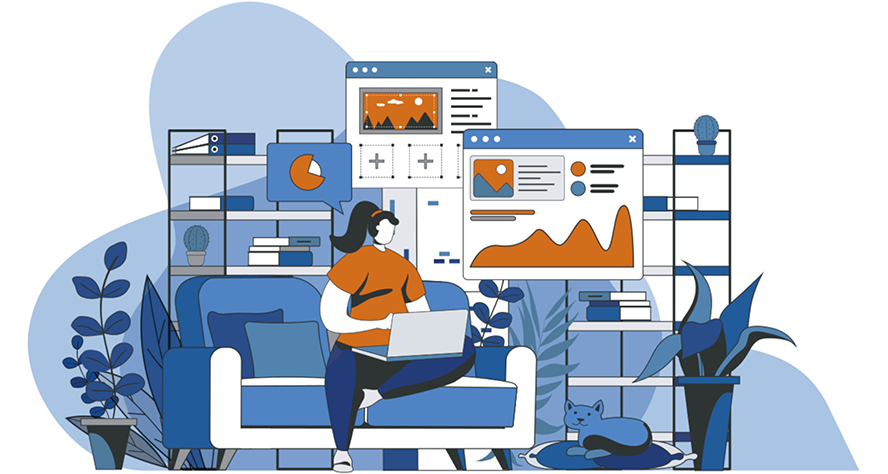The Covid-19 pandemic is the event to have recently caused a seismic shift to office life, but this will be just one of many challenges ahead for the world of work, as well as the role and design of the office.
Over the coming decades, business will have to manage an ageing demographic, changing worker profiles through diversity, increasing worker powers and plateauing productivity.
Ageing is a major long-term challenge. Most countries – especially those categorised as developed – are experiencing a shrinking labour supply as they fail to meet their population replacement rate. Without in-migration, populations will decline, causing an imbalance of workers compared with the number of pensioners needing support in the relatively near future.
After decades of the one-child policy, China has one of the lowest fertility rates in the world with 1.3 children per woman. While the policy has been dropped, one-child families are still the cultural norm. In Italy, families commonly had more than four children, but now average fewer than two. The US is an outlier with positive youth growth – mainly through migration – despite the country’s fertility rate falling steadily since 1950.
Only in developing countries is it a different story. Populations of more than half of Africa’s 54 nations will double, or more, by 2050, on the back of sustained high fertility and improving mortality rates.
The need for talent and diversity
Firms will also need to step up to attract and retain talent, with diversity already a high priority for most employers. There is a practical need to increase the entry of people from marginalised and underrepresented groups in the workforce, and to attract more women and older workers. This will be about processes – blind recruitment practices to level the playing field, and closing wage and benefit gaps.
Companies will need to accept flexible working to win the war for talent and to increase participation from parents, more women, and caregivers of all types. The reality will be more employee-focused: blended working arrangements (hybrid or remote), more annual leave and more flexible or fewer hours.
The great resignation
Meanwhile, the pandemic has instilled a greater sense of power among workers. Where new demands around working patterns and flexibility have not been met, or individuals have been prompted to rethink their career paths, there has been a swathe of departures in some jurisdictions, which has become known as ‘the great resignation’.
Increased worker power has seen a drive for unionisation, particularly in the US, where membership was on the decline. This collective bargaining power is largely about reconnecting wages to productivity growth after decades of large gains in output not being translated into higher real wages for workers.
Present in the background of these other changes is slowing productivity. Growth in productivity has run almost 3.5 times ahead of real wage growth since 1949 but is now stagnating, even with a rise in technology. Some countries, such as Iceland, trialled a four-day working week in order to boost productivity and worker happiness. The UAE has moved to a Monday-to-Friday working week, to bring it in line with Western and Asian markets.
Companies will turn to technology, particularly the increased use of robotics and automation, with more individual tasks able to be automated through artificial intelligence and sophisticated algorithms. This will alter both the types of jobs available, their number and their perceived value.
By replacing workers doing routine, methodical tasks (in professional services industries), machines can amplify the comparative advantage of workers with problem-solving, leadership and creativity skills. However, in manufacturing and service industries, there is a risk of worker displacement and the hollowing out of the labour force as the need for large numbers of human workers is removed.
All these trends will filter down to changes to the office, which must now prove its worth. The pre-pandemic emergence of the gig economy and the consequent rise in flexible office space is now likely to embed in the working culture. Savills Office FiT 2021 survey says that 12% of workers would be interested in co-working space compared with 3% one year prior.
Savills predicts an average 8-10% decrease in demand for offices across Europe due to new ways of working
The type of flexible space on offer is expected to become more diverse, with locations both in city centres and suburban areas. With Savills Landlord Flex Survey saying that coffee shops, hotels and client offices were also popular locations for home working, flexible offices may start to sit between office and home – an office environment without the commute.
Overall, demand for flexible space is also likely to increase with the great resignation seeing more people opt for freelance work. In the UK, enquiries for flexible office space are up 82% on pre-pandemic levels.
Savills Research predicts an average 8-10% decrease overall in demand for offices across Europe as companies adapt to new ways of working. Some of this space could switch to flexible space while others could be repurposed into alternative uses such as residential.
Location-wise, city centres are expected to retain their appeal for offices. In the US, the hub-and-spoke model is likely to prevail, with flexible offices supporting locations close to residential areas.
Near term, shortfalls in local or domestic workers can be filled by positive net migration. In the long term, some companies may choose more emerging cities to seek out larger working-age populations, as is being seen in Egypt and Saudi Arabia for Middle Eastern operations.
Inside the office, culture and branding will need to become integral to designing companies’ headquarters to reflect the value of diversity, as employers try to win employees back. Office life is finding favour again: the 2021 Savills Office FiT survey reported that 63% believed colleague collaboration is best achieved at the office, while 25% (up from 16% a year earlier) said they concentrate best in the office.
After a prolonged period of working from home, an increased number – 28% versus 18% – also thought the office best facilitates mental health. Space to enhance this needs to be consciously designed and inclusive; offices will be places to meet and build connections, and they need to engage all five senses to increase productivity and worker wellbeing.



